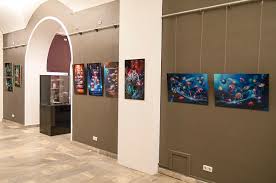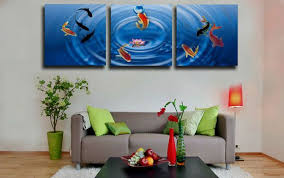ABOUT AQUARIAN PAINTING TECHNIQUE (part 3)
 The foregoing applies to any kind of art, but it is watercolor that is particularly susceptible to temperament and the “movement of the brush” emanating from the movement of the spirit of the master. It denotes a creative, mental and philosophical attitude to the material. This is the main secret and the problem of ownership of equipment. A high concentration of energy, self-control, a clear thought, a clear task, and a subtle sense of water, colors, and paper are the qualities of a painter that are necessary for the embodiment of an image in a whimsical watercolor painting.
The foregoing applies to any kind of art, but it is watercolor that is particularly susceptible to temperament and the “movement of the brush” emanating from the movement of the spirit of the master. It denotes a creative, mental and philosophical attitude to the material. This is the main secret and the problem of ownership of equipment. A high concentration of energy, self-control, a clear thought, a clear task, and a subtle sense of water, colors, and paper are the qualities of a painter that are necessary for the embodiment of an image in a whimsical watercolor painting.
A good illustration of what has been said is a brief acquaintance with one of the traditional pictorial techniques of the East. In China and Japan, there are ancient traditions of writing with water-based materials, mostly ink painting. The traditions of the East are very different from European ones. Painting, which is essentially calligraphy, is philosophy, one of the expressions of Tao for the Chinese mandarin (calligrapher) of the master of painting “Gohua” and Zen for the Japanese master of “Sumi-e.” This is an attempt to make the spirit of the object move on paper. Suibokuga (or as it is also called sumi-e, sumi-e, sumie) – Japanese ink painting on thin rice paper or silk. Initially, the Chinese style was borrowed by Japanese artists in the XIV century, and by the end of the XV it turned into the main direction of painting in Japan.
The paper used in this tradition is very thin and is capable of absorbing a large amount of water, so that the brush of a calligrapher artist should move along its surface very easily and quickly, otherwise the paper may tear. Therefore, the artist’s inspiration should be transmitted as soon as possible: “The lines should be applied as quickly as possible, and their number should be minimal, only the most necessary lines should be drawn. No slowness, no erasure, no repetition, retouching, no alteration, no” treatment “, no installation. Once applied, smears cannot be washed off, reapplied and are not subject to further corrections or finishing touches. Any smear applied after is sharply and painfully released due to ificheskih properties of paper. ” This is a quote from the book Introduction to Zen Buddhism by Daisetsu Tataro Suzuki (1870–1966), professor of Buddhist philosophy at Otani University in Kyoto. Here is how he describes the process of birth of sumi-e: “The artist must constantly, completely and involuntarily follow his inspiration. He simply allows him to control his hands, fingers and brush, as if they, together with his whole being, are just an instrument in the hands of someone someone else who temporarily moved in. It can be said that the brush does the work itself, regardless of the artist, who simply allows it to move without any conscious effort. If any logical connection appears between the brush and the paper or thinking, the whole effect disappears. It is easy to guess that the lines in the sum should show infinite variety. There is no distribution of chiaroscuro and no perspective. They are actually not needed in the sum: there is no claim to realism. The picture of the sum is reality itself, perfect by itself not a copy of anything. ”The line drawn by the artist of the genre of sumy is distinguished by completeness, nothing can go beyond it, nothing can fix it; it is as inevitable as a flash of lightning: the artist himself cannot remove it; this explains the beauty of the line. Things are beautiful where they are inevitable. There is no violence, no murder, no fraud, no copying, but only a free, unlimited and at the same time self-directed manifestation of movement, which is the principle of beauty. Through this unconscious Nature tells of its fate. ”
This is how Zen philosophy manifests itself in Japanese painting, the principle of which was formulated by Georges Dutyui: “Draw bamboo for ten years, become bamboo, then forget all about bamboos when you draw.”
This formula, however, is a good explanation and proof that virtuosity in art is something beyond the pure technique and experience of the performer. We will return to the intriguing theme of “secrets” and “unknown” in watercolor a little later. In the meantime, we continue talking about watercolors per se and the materials used in this technique.
Comparing various traditions in the watercolor painting technique, it is easy to notice that the variety of manners and techniques is largely determined by the difference in the materials used in the work.
Of greatest importance is the choice of paper, paints and brushes.
Paper, since it was invented in China in the 2nd century AD, as well as paints created since ancient times from pigments obtained mainly from the grinding of rare colored lands and minerals, have been very expensive and valuable. And the masters of the past could hardly afford to spend sheet by sheet, translate precious materials in a creative search. Slowness, concentration and thoroughness characterize the works of pioneers of this art form.




